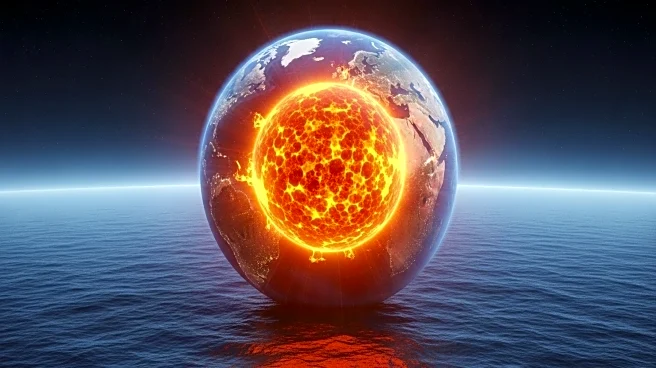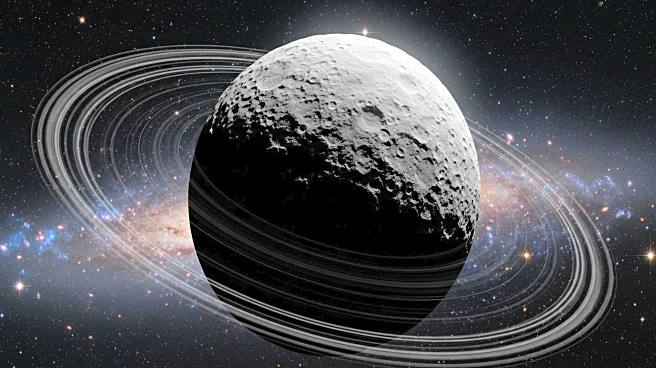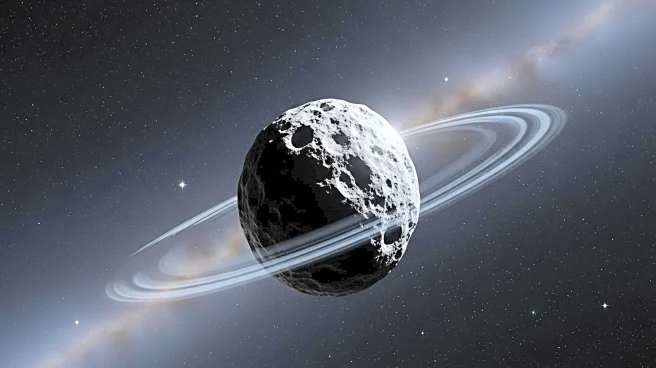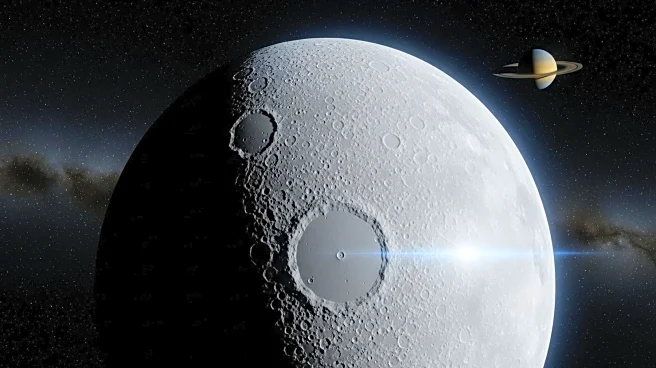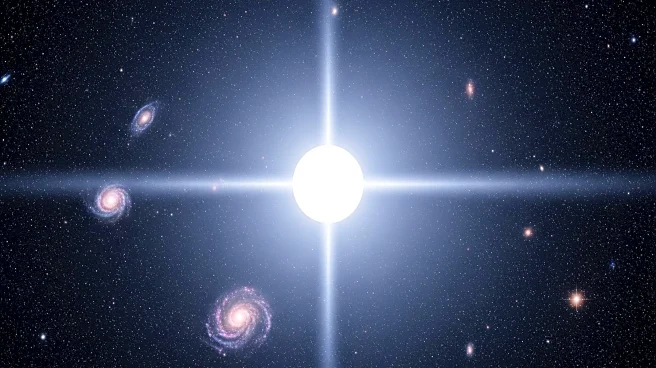What's Happening?
Researchers have confirmed that the Silverpit Crater beneath the North Sea was formed by an asteroid impact approximately 45 million years ago. Led by Dr. Uisdean Nicholson of Heriot-Watt University, the study utilized seismic imaging and microscopic analysis of rock samples to provide definitive evidence of the crater's origin. The impact, caused by a 530-foot-wide asteroid, generated a massive tsunami over 330 feet high. This discovery resolves a longstanding debate about the crater's formation, which had previously included theories of salt movement and volcanic activity.
Why It's Important?
The confirmation of the Silverpit Crater as an impact site enhances understanding of Earth's geological history and the potential effects of asteroid impacts. It underscores the importance of studying impact craters to assess historical and future asteroid threats. The findings contribute to planetary science by offering insights into the dynamics of hypervelocity impacts, which can inform strategies for planetary defense and preparedness against potential future asteroid collisions.
What's Next?
The research team plans to further investigate the Silverpit Crater using advanced seismic imaging techniques. This study may lead to new insights into the subsurface effects of impacts on Earth and other planets. The findings could influence future geological research and planetary defense strategies, emphasizing the need for continued monitoring and analysis of potential impact sites.
Beyond the Headlines
The study of the Silverpit Crater highlights the importance of interdisciplinary collaboration in geological research. It may prompt discussions on the ethical considerations of planetary defense and the need for international cooperation in addressing potential asteroid threats. The research also contributes to the broader understanding of Earth's dynamic geological processes and their implications for planetary science.



